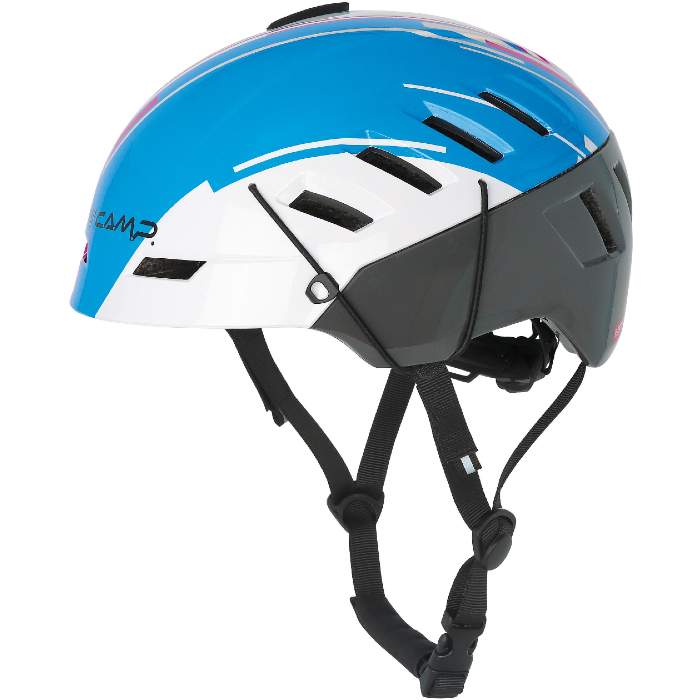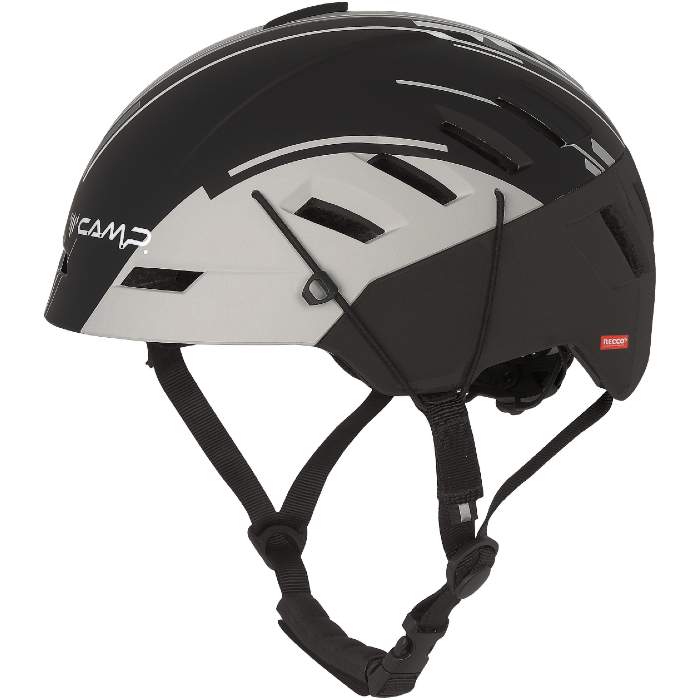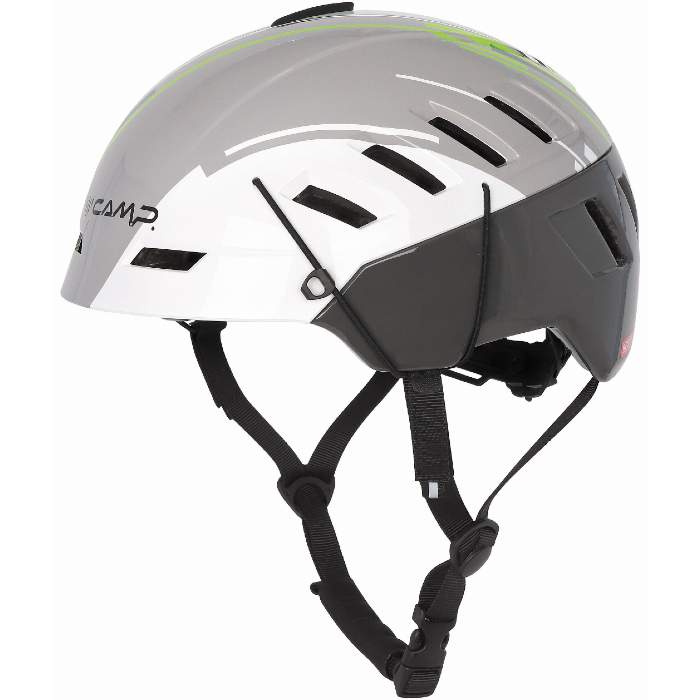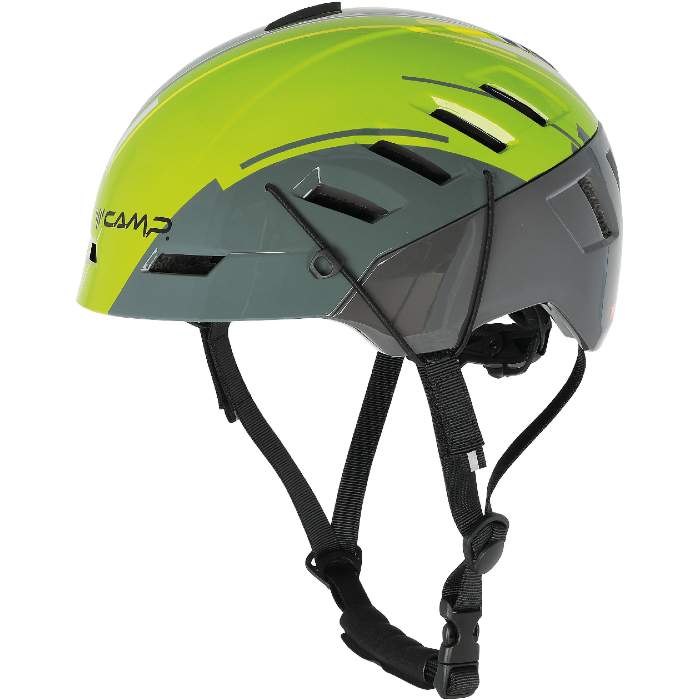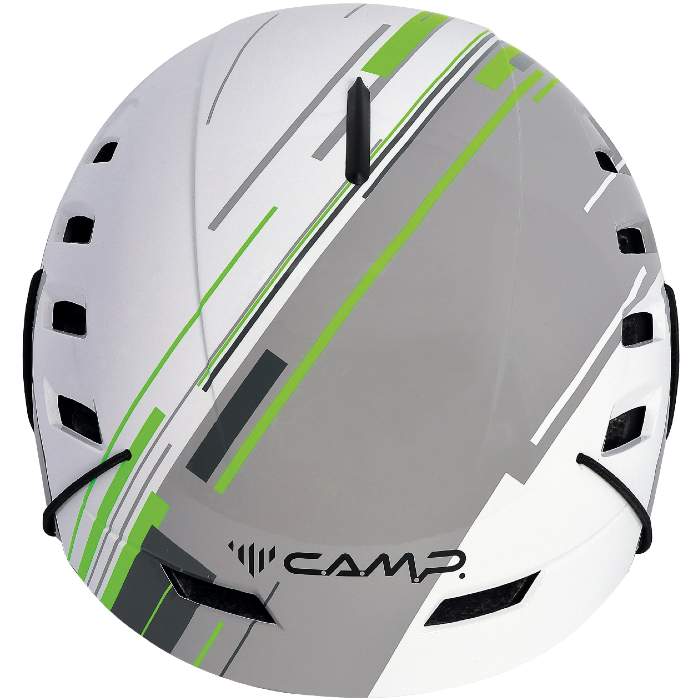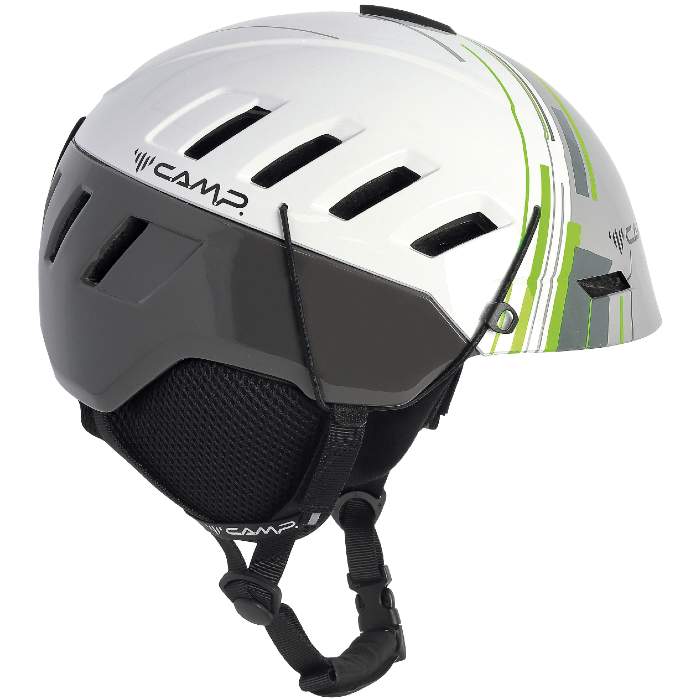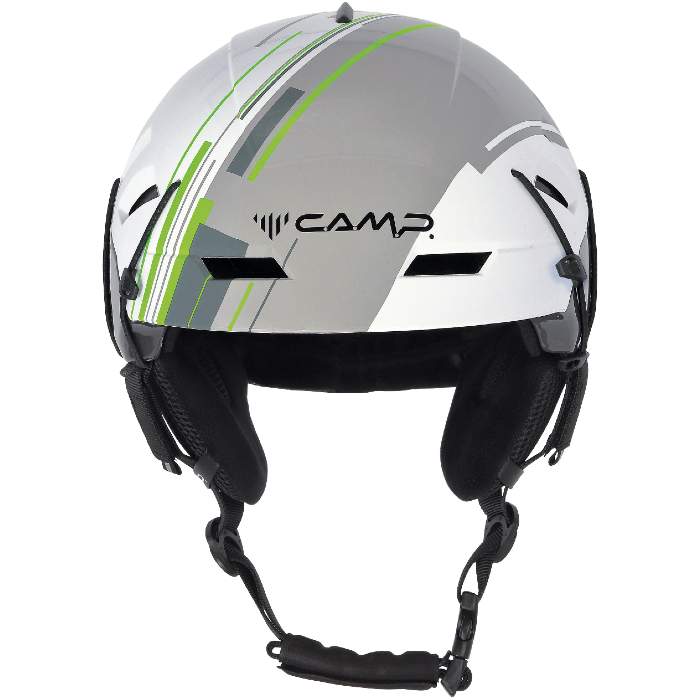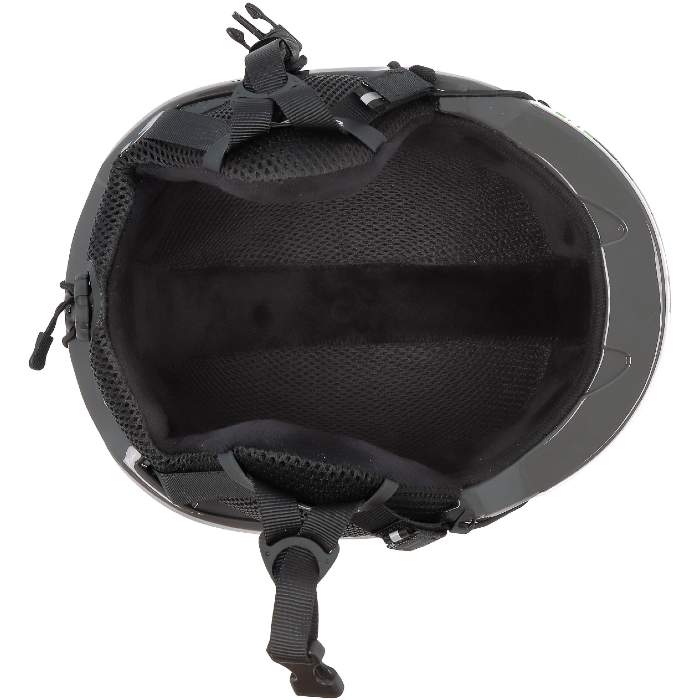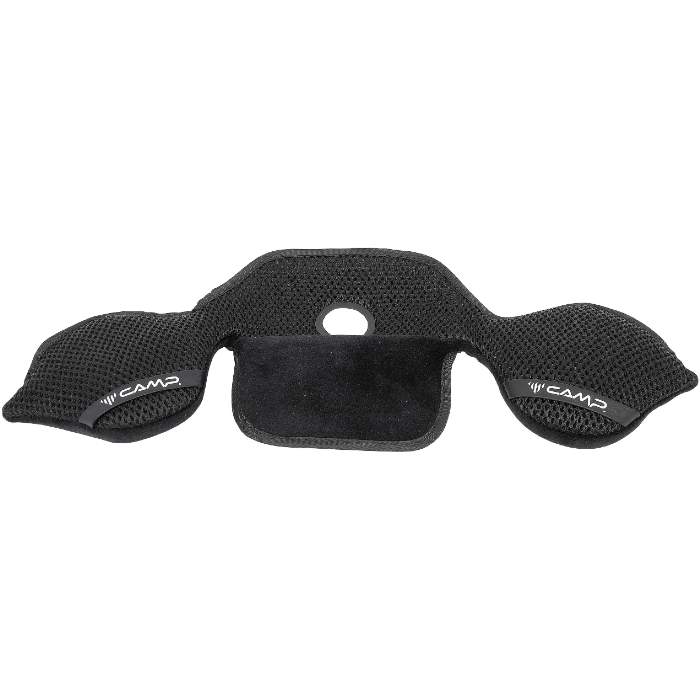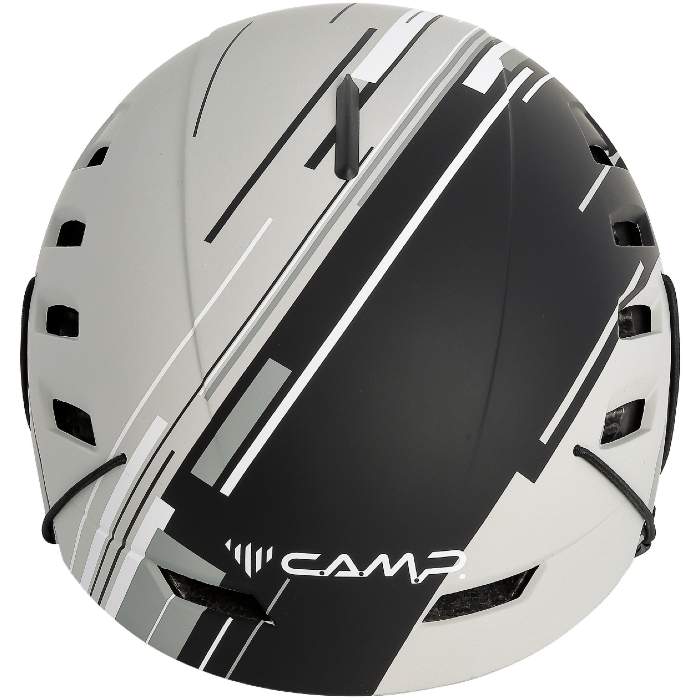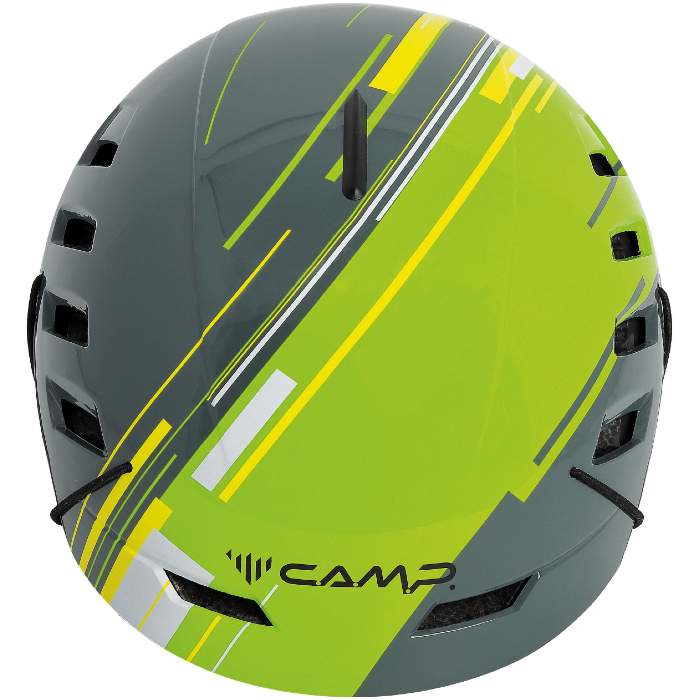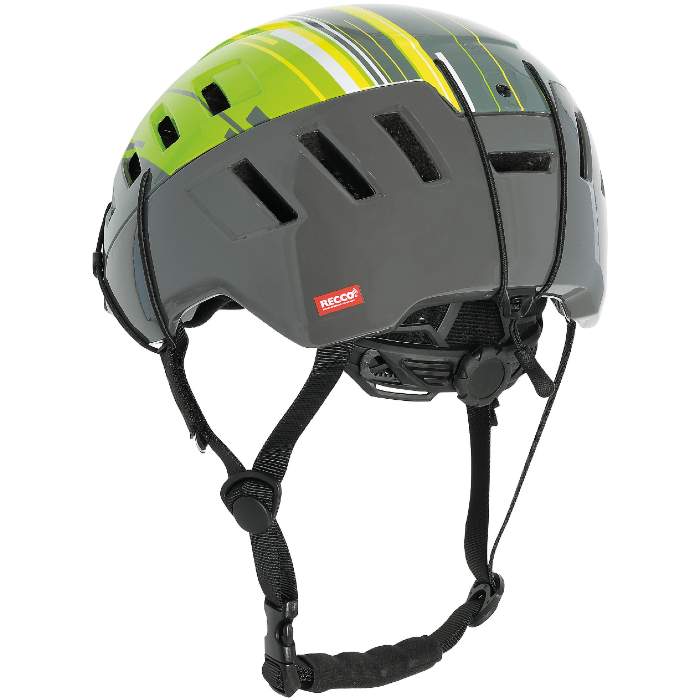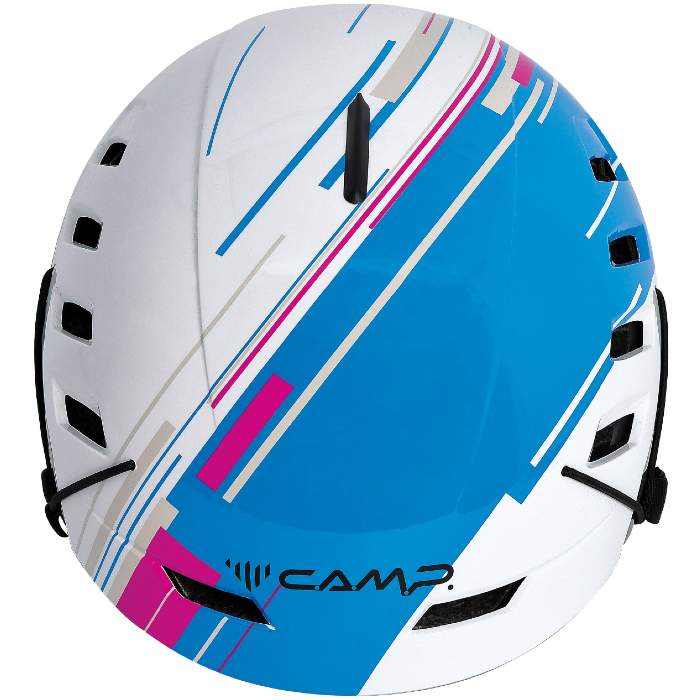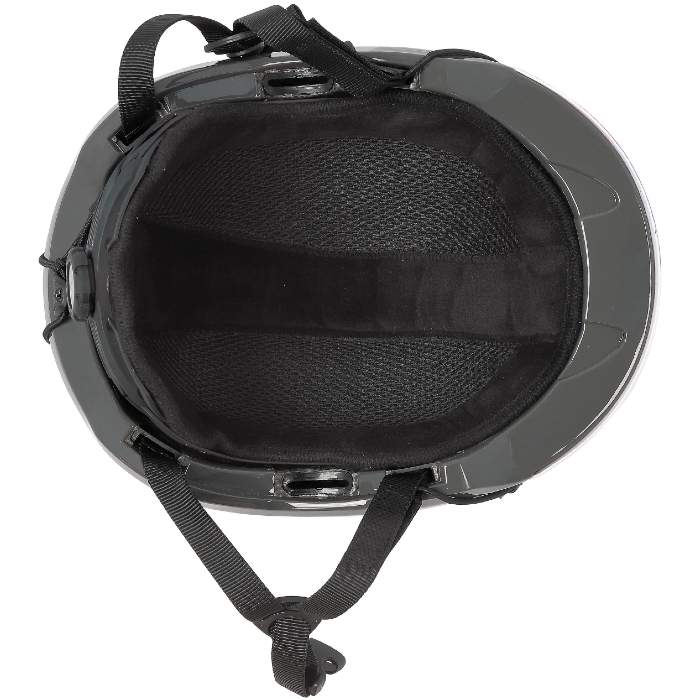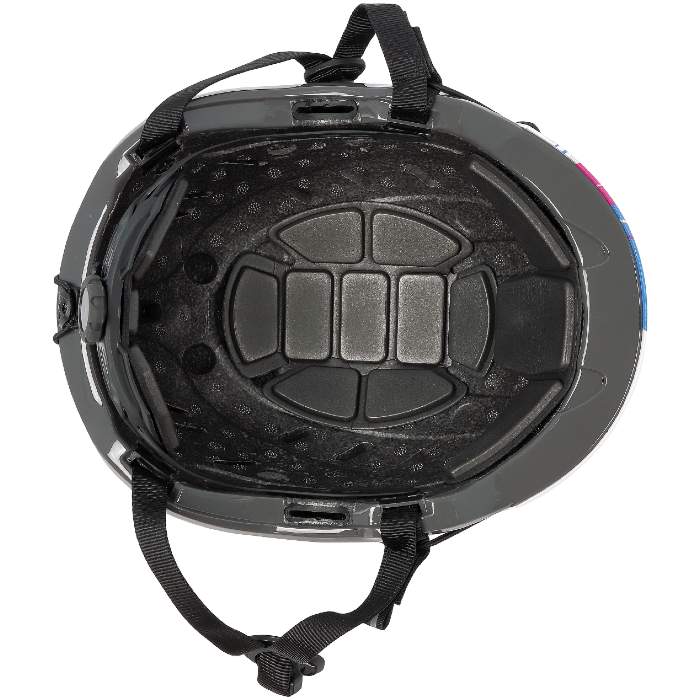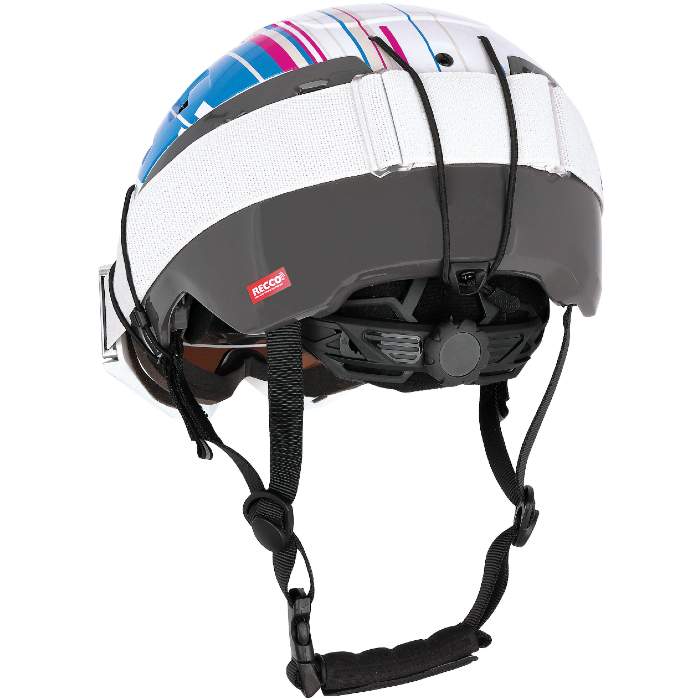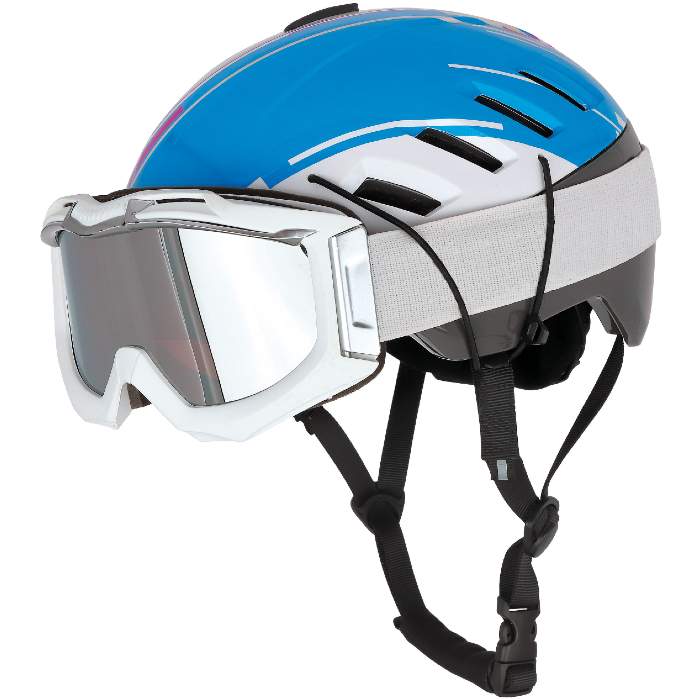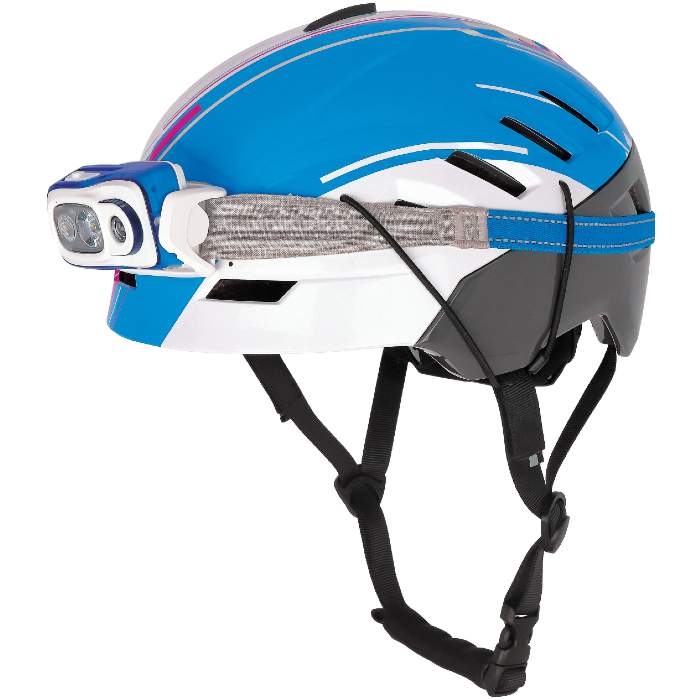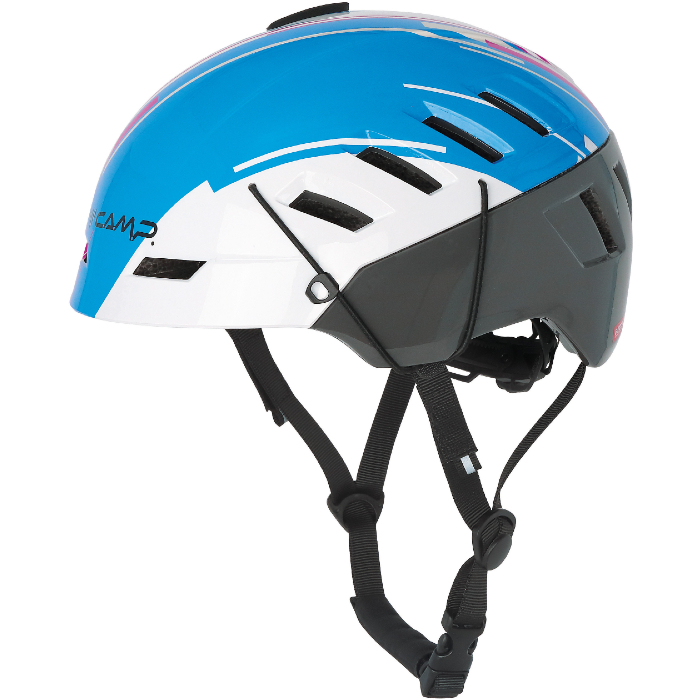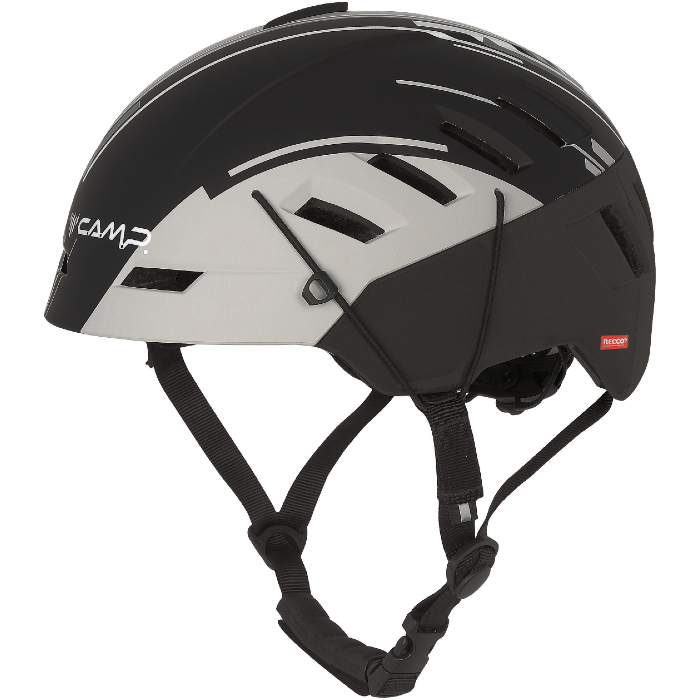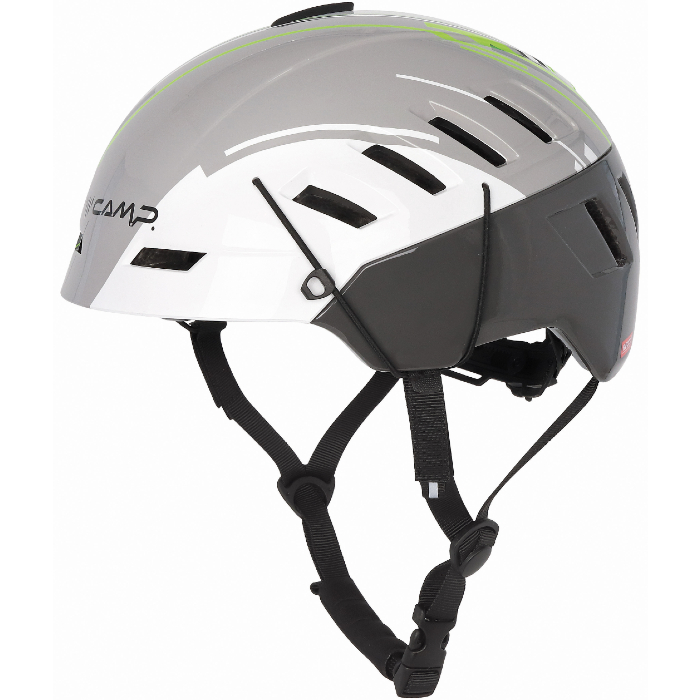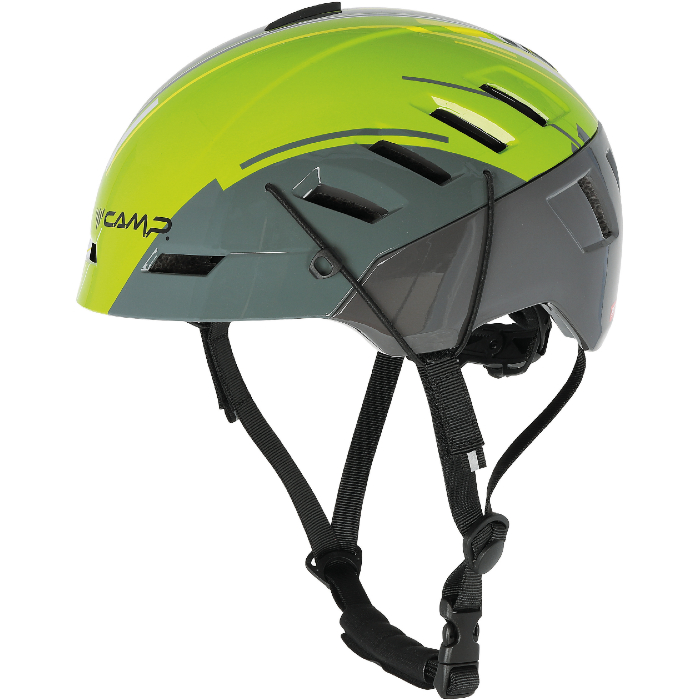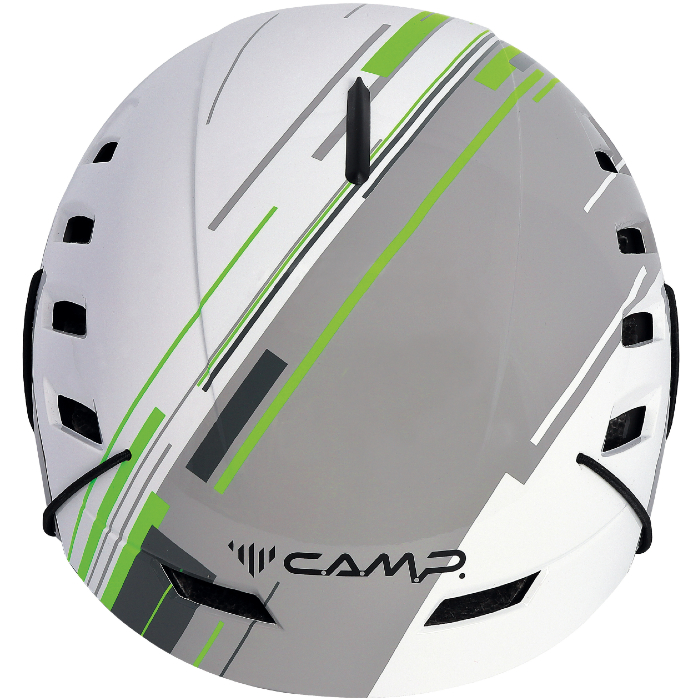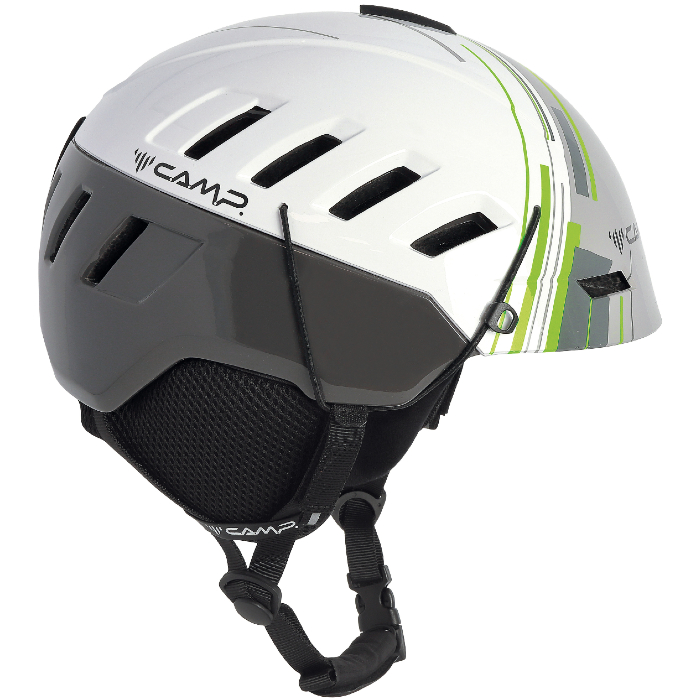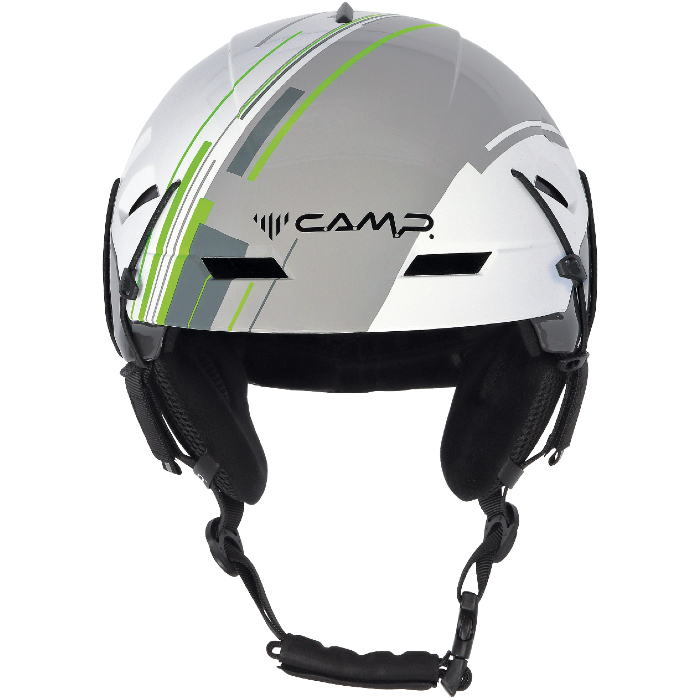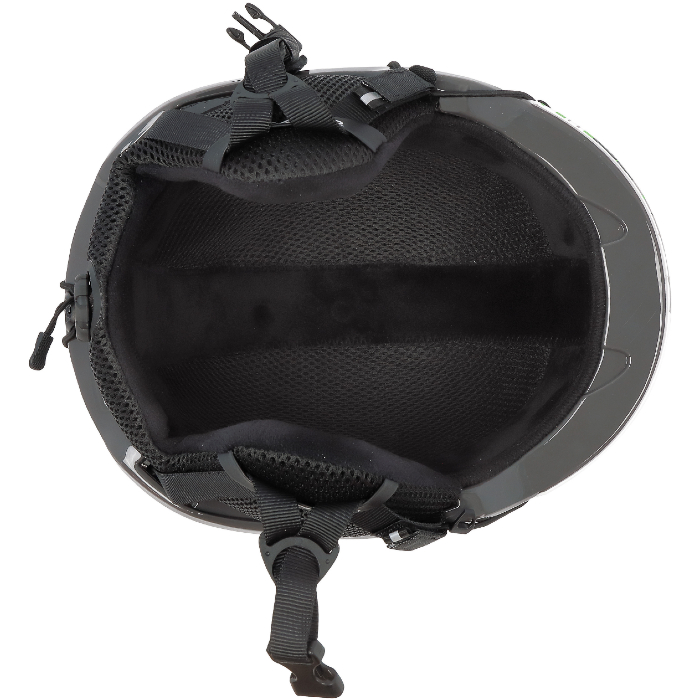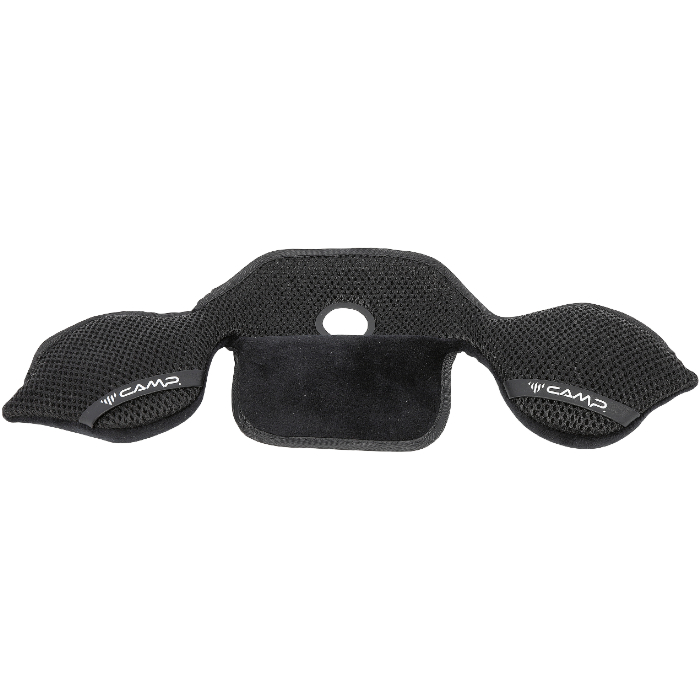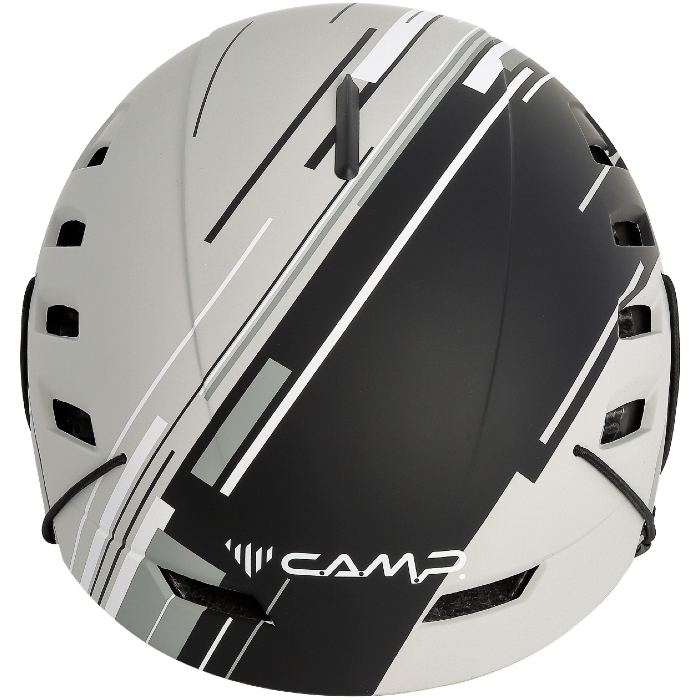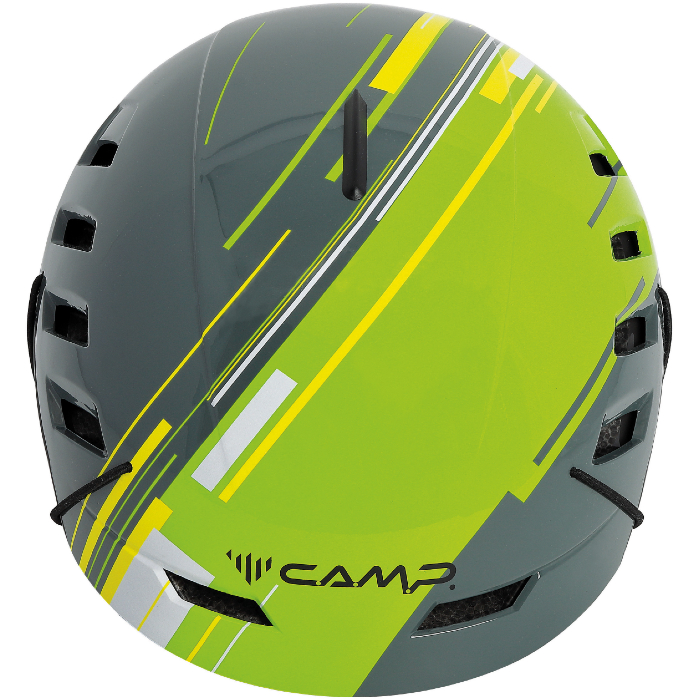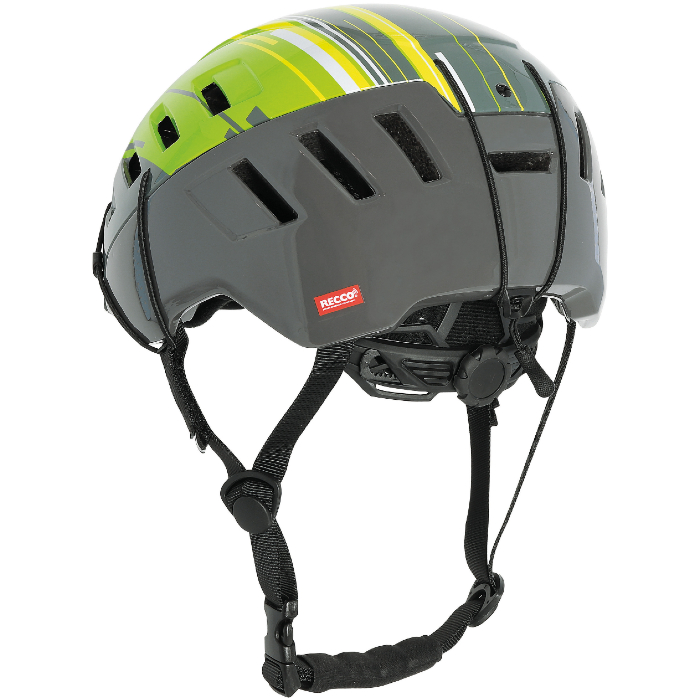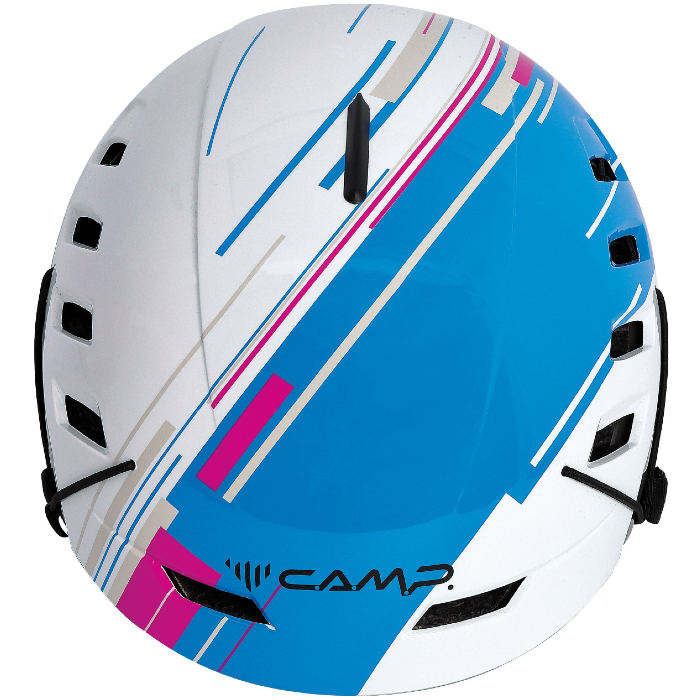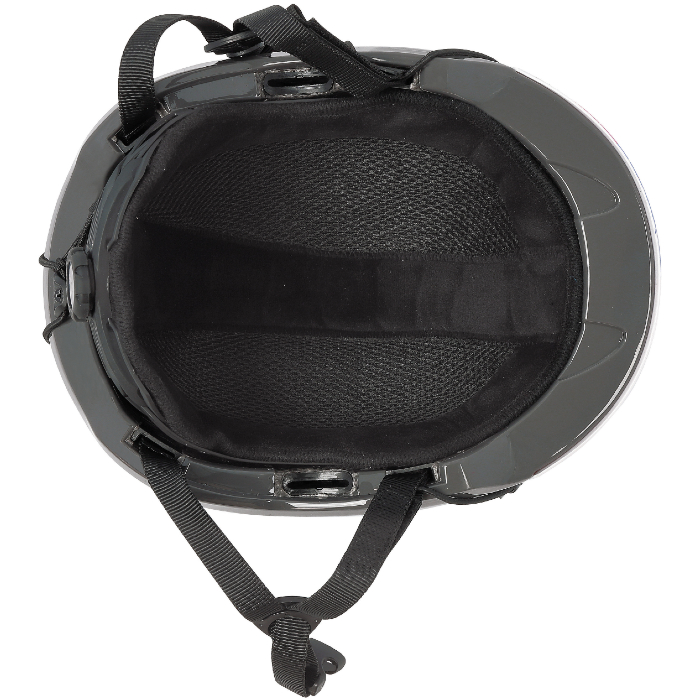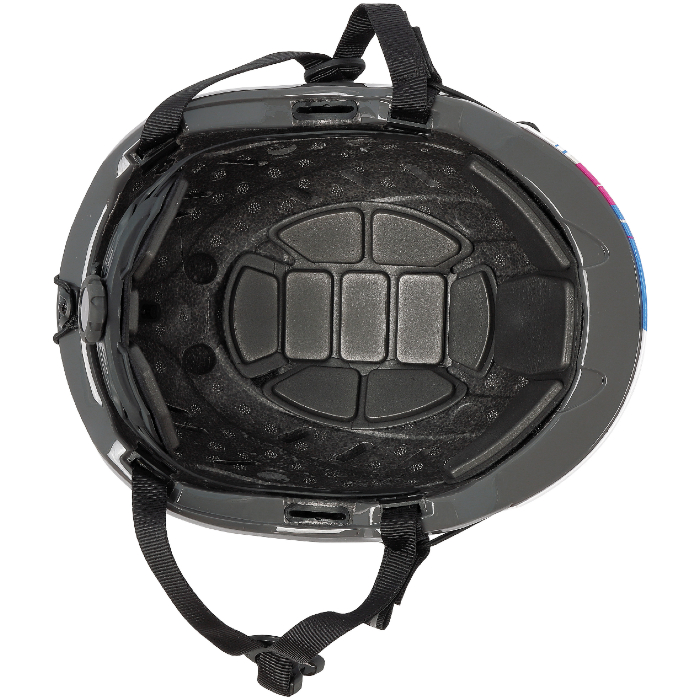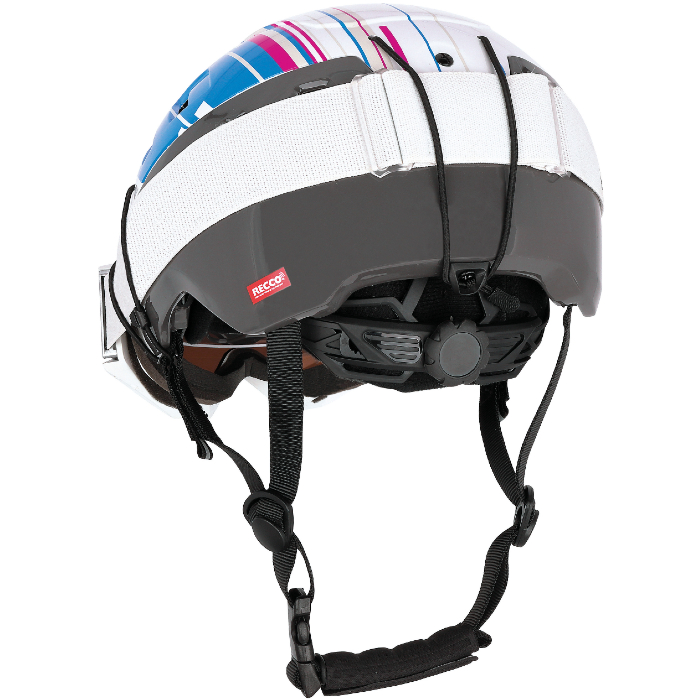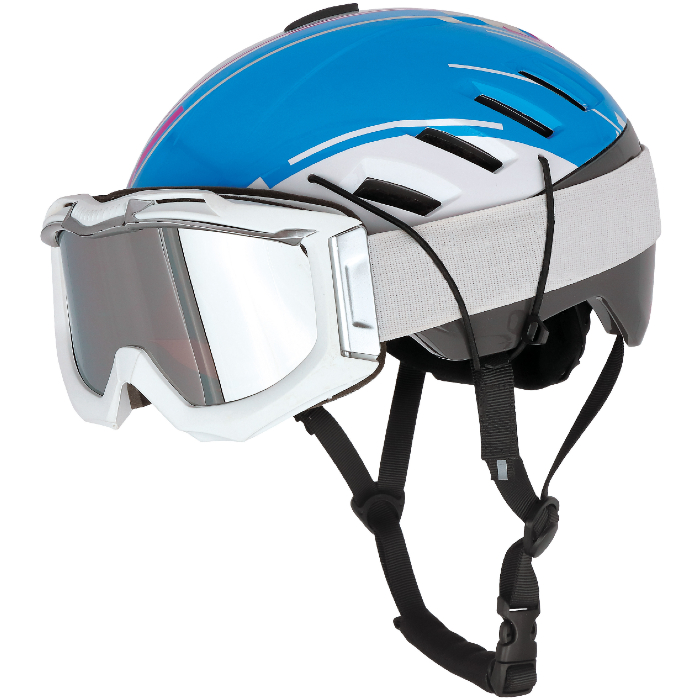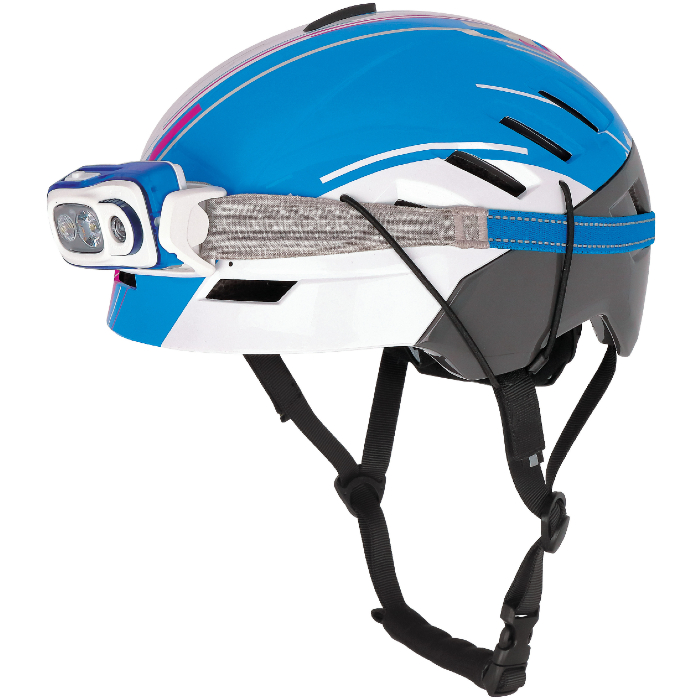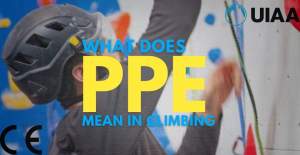A pictoral representation of the UIAA-106 and EN-12492 standards for helmets.
Voyager
Description
- In-mold construction with ABS upper shell, EPS inner core, and lower protective PC layer
- 17 openings distributed throughout the shell for excellent ventilation
- Removable fabric padding with breathable mesh
- Anti-sweat padding kit included
- Detachable ear protection kit included
- Rear adjustment dial with rubber coated wheel for excellent grip
- Keeper system for goggles or headlamp uses three elastic attachment points for a light, secure and functional attachment that can be used while wearing the helmet
- Equipped with RECCO® reflector
- Construction: Hard shell + In-mold
- Shell material: ABS + Polycarbonate
The Voyager is a ski mountaineering helmet designed to be compliant with ISMF regulations that require helmets to be dual certified for mountaineering (EN 12492) and alpine skiing (EN 1077 / B). The dual certification guarantees a higher level of safety for athletes especially from side impacts. To the meet the stringent EN 1077 / B standard, the Voyager uses in-mold construction with an extremely hard and impact-resistant ABS plastic shell. The core interior is expanded polystyrene (EPS) that is reinforced with a layer of polycarbonate (PC) to help absorb shocks and further increase resistance. 17 openings in the shell are optimally positioned for maximum breathability. The breathable mesh padding can be interchanged with the included anti-sweat foam kit that includes the upper part for the head, pads for covering the adjustment dial, and a front part with two different thicknesses (5 mm and 10 mm) to fine-tune the fit. Earmuffs that can be attached and detached are also included making the Voyager a great helmet for all kinds of skiing. The keeper system for goggles or headlamp uses three pieces of elastic with hooks (one on each side and one on the back) for a lightweight, secure attachment. The system can be used while wearing gloves and without removing the helmet. The Voyager is also equipped with an internal RECCO® reflector making it traceable by mountain rescue operators equipped with RECCO® detectors (note: RECCO® technology does not replace an avalanche beacon in any way). The keeper system for goggles or headlamp uses three pieces of elastic with hooks (one on each side and one on the back) for a lightweight, secure attachment. The system can be used while wearing gloves and without removing the helmet. The Voyager is also equipped with an internal RECCO® reflector making it traceable by mountain rescue operators equipped with RECCO® detectors (note: RECCO® technology does not replace an avalanche beacon in any way). The keeper system for goggles or headlamp uses three pieces of elastic with hooks (one on each side and one on the back) for a lightweight, secure attachment. The system can be used while wearing gloves and without removing the helmet. The Voyager is also equipped with an internal RECCO® reflector making it traceable by mountain rescue operators equipped with RECCO® detectors (note: RECCO® technology does not replace an avalanche beacon in any way).
Retail price
When you click a link below and then checkout online, no matter what you buy (climbing gear or not), we get a small commission that helps us keep this site up-to-date. Thanks!
Weight (g)  Weight (g)In grams, the weight, as stated by the manufacturer/brand. If there are differences in weight (due to multiple size or optional accessories) we note those here. | 465 g Size 1: 465 g / 16.4 oz |
Gender  GenderThis is the gender as stated by the manufacturer/brand. We use the term "Men" and "Unisex" interchangeably, as there is no difference between these types of helmets. |
Unisex |
Size Range  Size RangeThe sizing options of the helmet according to the manufacturer. | 21.20 in - 24.40 in Size 1: 54-58 cm / 21.2-22.8 in |
Features  FeaturesBike Cert (EN 1078)The EN certification for helmets used for bicycling and skating. The major difference in testing 1078 involves needs for more head coverage and for the helmet to pass a deflection or 'roll-off' test of the impact force. BrimHaving a brim on a helmet may be inconsequential to some climbers but they make a great additional bit of protection against sun, rain and falling debris like small rocks or verglass. Multiple SizesThis is helpful for those with particularly small or large heads because helmets that come in 2 or 3 sizes cover a broader range of head size. Usually these are denoted as size 1 or 2, though some brands have S/M and M/L. Face Shield CompatibleFace shields are a part of PPE that could be handy when drilling, developing and cleaning particularly dirty remote routes. Usually only used by work at height professionals. MIPS technologyMIPS or Multidirectional Impact Protection System is a technology designed to reduce the amount of impact force that makes it to the brain. This is accomplished by adding a low friction cap between the liner and the helmet, allowing the shell to deflect around the head rather than transfer the forces from impact directly to the wearer. Many bicycle helmets include this feature and it is starting to be applied to sports like skiing, motorcycling and climbing. Many MIPS helmets are also EN1078 compliant. Ponytail CutoutSo far these are only found in "women's" helmets. It's a cutout / notch area that accommodates a low hanging ponytail hairstyle. RECCO® reflectorThese are used in locating someone missing or buried in an avalanche and are becoming more common in climbing gear due to the increased popularity of ski mountaineering. Though they are more often sold as something to add onto the helmet than being built into one, some manufacturers have begun to build them in. Ski Cert (EN 1077)The EN certification for helmets used for climbing and skiing. This test is simpler than the EN/UIAA one performed for helmets in general, but increases the amount of force that a helmet must endure. Likely this to simulate the faster speeds involved with downhill skiing impacts versus rockfall or climber accidents. This cert becoming more common in helmets as SkiMo popularity increases and more climbers are adding backcountry skiing to their mountaineering repertoire. |
Multiple Sizes RECCO® reflector Ski Cert (EN 1077) |
Quick Adjust  Quick AdjustQuick Adjust refers to the straps of the helmet. Do you want the ability to ability to "quickly" adjust the fit. This could be a dial, or other plastic pieces. Really, most climbers don't need to change the fit of the helmet often, unless you're climbing with and without hats, or you have big hair that flattens and then requires tightening after climbing for awhile. |
Yes |
Vents  VentsRefers to openings in the helmet body to allow air flow. Commonly found in most helmets these days, but often more so in foam and hybrid foam helmets than traditional hardshell polycarbonate shells. Learn More
Click here to read more on helmet construction |
Yes |
Headlamp Compatable  Headlamp CompatibleMany helmets include hooks or clips for holding a standard headlamp in place, which is quite useful for the caver or alpinist. Ask any climber who has been benighted and they’ll tell you just how useful this feature can be. |
Yes |
Face Shield Compatable  Face Shield CompatibleFace shields are a part of PPE that could be handy when drilling, developing and cleaning particularly dirty remote routes. This feature isn't very common in climbing helmets and usually only used by work at height professionals. |
No |
| Certification | CE, EN |
No reviews yet.
The UIAA equipment standard provides a baseline for equipment performance in a test lab under controlled conditions on new equipment. Although these test conditions are relevant to the conditions encountered climbing, conditions encountered at the crags and the condition of the equipment are equally important. This recommendation from the UIAA member federation The British Mountaineering Council (BMC) provides vital equipment information that is NOT explicitly addressed in the standard, particularly failure modes of the equipment and recommendations for the use, inspection, maintenance, and retirement of equipment.

